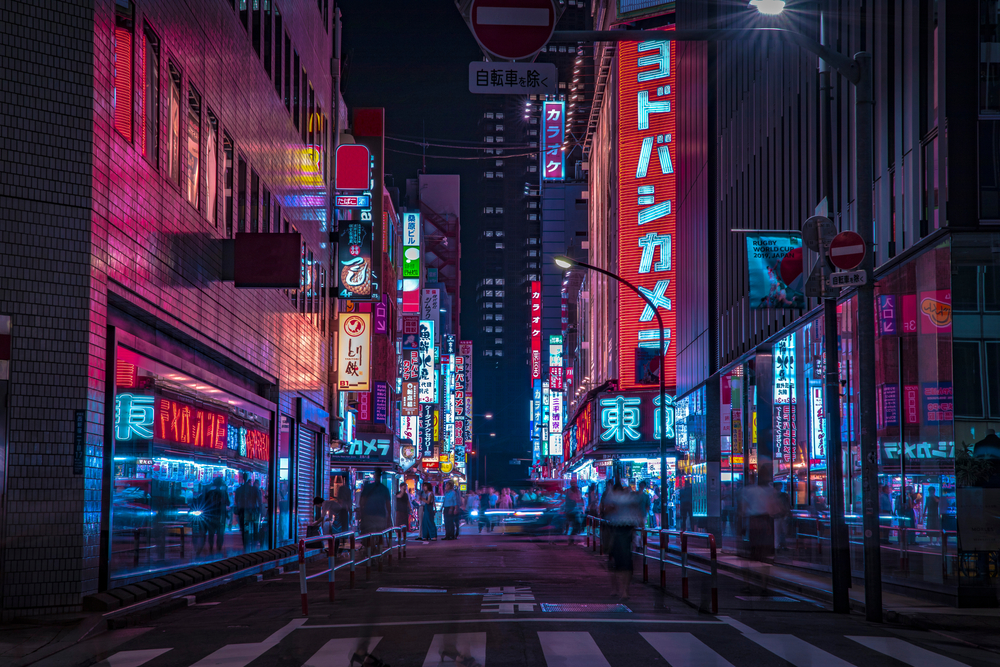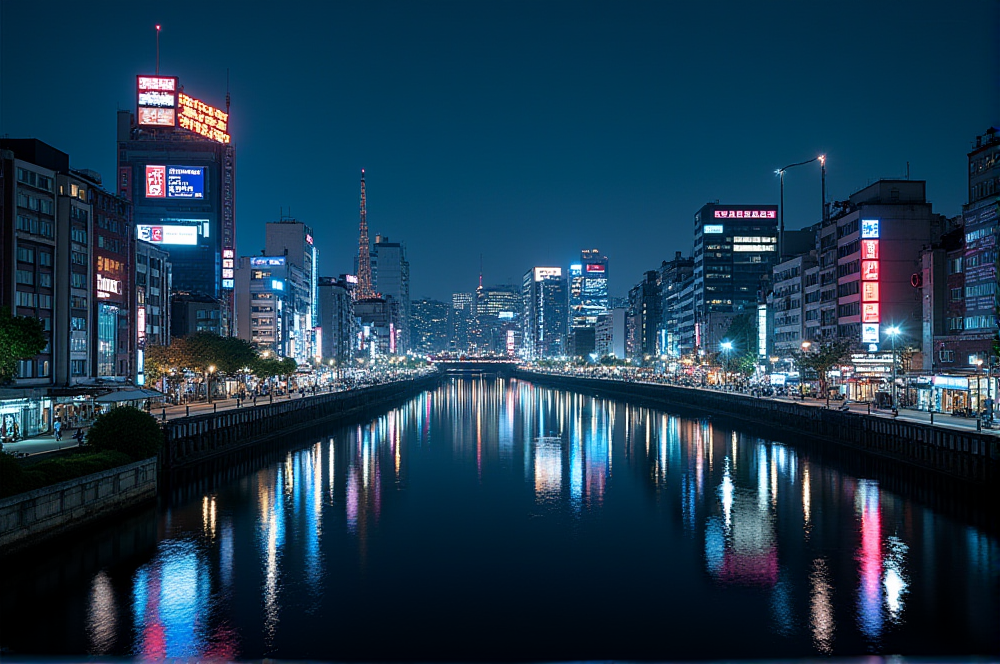

After enjoying sightseeing in the Kanto region, many people may be thinking of having fun in the red-light district as well.
The famous red-light districts in the Kanto region have different characteristics depending on the area.
This time, we will introduce the famous red-light districts of Tokyo, Kanagawa, Chiba, Ibaraki, Tochigi, Gunma, and Saitama.
It explains the characteristics of each region and how to access them from Tokyo, so it’s a must-see for those who want to know about the famous red-light districts in the Kanto region.
Kanto’s famous red-light district 1: Tokyo’s “Yoshiwara”

Yoshiwara in Tokyo is one of the most famous red-light districts in the Kanto region.
Here, we will explain the charm, characteristics, and history of Yoshiwara, as well as how to access it from Tokyo.
Yoshiwara’s charms and characteristics
Yoshiwara’s biggest feature is that there are only soap shops.
Another appeal of Yoshiwara is the wide range of prices.
Yoshiwara has a unique culture called Yoshiwara Age, where people age once every three years based on the age they work in Yoshiwara.
There is a theory that this is to prevent people from discovering their identity, and some girls work at a different age than their actual age.
History of Yoshiwara
When the Edo Shogunate was established, many red-light districts were established in the city, but the Yoshiwara red-light district was founded in 1617 when they were brought together in one place.
At this time, it was located near Nihonbashi, but it became the center of the city and moved to near Asakusa.
Although it suffered fires in 1768, 1787, 1816, 1835, 1845, 1862, 1864, and 1866, it was rebuilt each time and continues to this day.
Access [about 20 minutes from Tokyo Station]
Yoshiwara can be reached in 10 minutes on foot from Minowa.
The route from Tokyo Station to Minowa is as follows:
● From Tokyo Station to Ueno Station (JR Utsunomiya Line) From Ueno Station to Minowa Station (Tokyo Metro Hibiya Line): 18 minutes
● From Tokyo Station to Akihabara Station (JR Keihin Tohoku/Negishi Line) From Akihabara Station to Minowa Station (Tokyo Metro Hibiya Line): 20 minutes
● Tokyo Station to Ginza Station (Tokyo Metro Marunouchi Line) Ginza Station to Minowa Station (Tokyo Metro Hibiya Line): 30 minutes
You will need to transfer, but you can get there in about 20 minutes.
Click here to search for adult entertainment shops in Yoshiwara
Kanto’s famous red-light district 2: “Kawasaki” in Kanagawa Prefecture
The second famous red-light district in the Kanto region is Kawasaki in Kanagawa.
Here, we will explain the charm, characteristics, and history of Kawasaki, as well as how to access it from Tokyo.
Kawasaki’s charms and characteristics
Kawasaki is the second most famous red-light district in the Kanto region after Yoshiwara, and is divided into Horinouchi, a famous soap town, and Minamicho, a former red-light district.
There are many soap shops, but there are also many health shops such as delivery health shops.
Also, since Kawasaki is a red-light district with a long history, it is also attractive that there are many long-established stores.
There is a wide range of prices, from high-end stores to low-cost stores.
History of Kawasaki
Previously, Kawasaki had many factories and was located close to the Kawasaki Racecourse.
That’s why so many men gathered there.
After the war, red-light districts were formed targeting these men.
Although the Kawasaki red-light district disappeared during the war, there are still soap shops in Kawasaki, which are becoming rare nationwide.
Access [about 30 minutes from Tokyo]
From Tokyo Station, you can take the conventional line to Kawasaki Station in less than 30 minutes.
● JR Ueno Tokyo Line: 20 minutes
● JR Keihin Tohoku Line: 27 minutes
● JR Tokaido Main Line: 17 minutes
Shin-Kawasaki Station can be reached in 21 minutes from Tokyo Station on the JR Yokosuka Line.
Click here to search for adult entertainment shops in Kawasaki
Famous red-light district 3 in Kanto: “Sakaemachi” in Chiba Prefecture

The third famous red-light district in the Kanto region is Sakaemachi in Chiba.
Here, we will explain the charm, characteristics, and history of Sakaemachi, as well as how to access it from Tokyo.
Charm and characteristics of Sakaemachi
Sakaemachi originally flourished as a soap town, but now hotel health care and delivery health services are also popular.
However, one of Sakaemachi’s characteristics is the abundance of store-based entertainment establishments such as soap shops and health stores.
There are over 40 soap shops, making it one of the top in the country.
Because there are so many stores, the price range is wide.
History of Sakaemachi
Sakaemachi was not originally a red-light district, but rather a shopping district.
Later, in 1952, Akebono-cho in Sakaemachi began its history as an entertainment district.
In 1957, Turkish baths began to develop and business began as Soap Street.
Initially, only Akebono-cho was the entertainment district, but now the entire Sakae-cho is flourishing as an entertainment district.
Access [About 40 minutes from Tokyo]
It takes about 40 minutes to get from Tokyo Station to Sakaemachi Station, but you will need to transfer.
● Tokyo Station to Chiba Station (JR Sobu Main Line Limited Express Narita Express No. 38) → Chiba Station to Sakaemachi (Chiba Urban Monorail Line 1): 40 minutes
● Tokyo Station to Chiba Minato Station (JR Keiyo Main Line) → Chiba Minato Station to Sakaemachi (Chiba Urban Monorail Line 1): 62 minutes
We recommend using the express train, which will arrive faster.
Click here to search for adult entertainment shops in Chiba City (Sakaemachi)
Kanto’s famous red-light district 4: Tsuchiura in Ibaraki Prefecture
The fourth famous red-light district in the Kanto region is Tsuchiura in Ibaraki.
Here, we will explain Tsuchiura’s charm, characteristics, and history, as well as how to access it from Tokyo.
Tsuchiura’s charms and characteristics
Tsuchiura is said to be one of the largest red-light districts in northern Kanto.
Sakuramachi 2-chome is a historic red-light district where adult entertainment shops such as soap and health shops flourish, and the nostalgic atmosphere remains.
There are a wide variety of adult entertainment establishments, and the feature is that you can enjoy short courses that suit any budget, such as short courses starting from 7,000 yen for 35 minutes and courses starting from 16,000 yen for 60 minutes.
History of Tsuchiura
Around 1922, Tsuchiura flourished as a comfort station for naval personnel.
After that, the police cracked down on public morals and moved surrounding restaurants to Tsuchiura, but today it has become a red-light district that attracts people from Kashima and Tsukuba Academy City.
Access [about 50 minutes from Tokyo]
You can arrive at Tsuchiura Station from Tokyo Station without changing trains.
● From Tokyo Station to Tsuchiura Station (JR Joban Line Limited Express, Ueno Tokyo Line): 48 minutes
● From Shinagawa Station to Tsuchiura Station (JR Tokaido Main Line Limited Express Tokiwa): 56 minutes
By car, you can get there in about an hour from central Tokyo by taking the Shuto Expressway and taking the Joban Expressway.
Click here to search for adult entertainment shops in Tsuchiura
Famous red-light district 5 in Kanto: “Utsunomiya” in Tochigi Prefecture

The fifth famous red-light district in the Kanto region is Utsunomiya in Tochigi.
Here, we will explain the charm, characteristics, and history of Utsunomiya, as well as how to access it from Tokyo.
Utsunomiya’s charms and characteristics
Utsunomiya is characterized by its large number of soap shops.
There are also soap shops that employ a large number of girls, and the appeal of Utsunomiya is that you can play with various types of girls.
There are not only long-established stores but also relatively reasonable stores, so you can enjoy shopping that fits your budget.
Another characteristic of Utsunomiya’s red-light district is that many stores open early in the morning.
History of Utsunomiya
Utsunomiya’s red-light district dates back to the Edo period.
Utsunomiya flourished as a post town, and inns began offering sexual services as a way to attract customers.
The post town of Utsunomiya was burnt down during the Inutatsu War that followed.
However, during the Meiji period, it prospered as a military town, and the number of shops offering sexual services targeting soldiers increased again.
Most of it was destroyed by fire during World War II, but the current red-light district was formed through reconstruction.
Access [about 50 minutes from Tokyo]
It takes about 50 minutes from Tokyo Station to Utsunomiya Station by Tohoku Shinkansen.
The following Shinkansen trains also depart from Ueno Station.
● Yamabiko
● Eggplant
● Wing
It takes about 2 hours from Tokyo to Utsunomiya on the expressway, so the Shinkansen will get you there faster.
Kanto’s famous red-light district 6: Takasaki in Gunma Prefecture
The sixth famous red-light district in the Kanto region is Takasaki in Gunma.
Here, we will explain the charm, characteristics, and history of Takasaki, as well as how to access it from Tokyo.
Takasaki’s charms and characteristics
Chuo Ginza Street is the red-light district in Takasaki.
There are some adult entertainment salons, but most of the adult entertainment establishments in Takasaki are delivery health services.
Some stores have over 100 girls, so it’s great that you can find the girl you like.
Another characteristic of Takasaki is that delivery health concepts and service content vary widely depending on the store.
History of Takasaki
During the Edo period, Takasaki prospered as a castle town and post town, and there were private prostitutes, but serving women was prohibited in Takasaki Castle.
However, before the war, Takasaki flourished as a military capital and became a red light district catering to military personnel.
After the war, it became a red light district and became a famous red-light district like Yoshiwara in Tokyo, but it was hit hard by the Anti-Prostitution Law of 1955, and an increasing number of shops changed their business format.
Even now, there are no soaplands in Takasaki, and the area is an entertainment district with mainly delivery health shops.
Access [about 50 minutes from Tokyo]
It takes less than 50 minutes from Tokyo to Takasaki by Shinkansen. There are no transfers from Tokyo Station to Takasaki Station.
From Ueno Station, the JR Limited Express “Akagi” and “Kusatsu Shima” are more reasonable than the Shinkansen, but take about 1 hour and 30 minutes.
Click here to search for adult entertainment shops in Takasaki
Kanto’s famous red-light district 7: Omiya in Saitama Prefecture

Omiya in Saitama is the seventh famous red-light district in the Kanto region.
Here, we will explain Omiya’s charm, characteristics, and history, as well as how to access it from Tokyo.
Omiya’s charms and characteristics
Omiya is one of the top-class downtown areas in Saitama Prefecture.
The south and north have different charms.
Minami Ginza in the south is full of restaurants where you can enjoy meals.
And Kita Ginza in the north is a red-light district where soaps are gathered.
It is characterized by the fact that there are many stores where you can receive services at reasonable prices.
History of Omiya
Omiya flourished as a post town during the Edo period, and at the same time, it also had aspects as a red-light district.
Although Saitama Prefecture declared the abolition of prostitution during the Meiji era, this was not accepted and the business continued.
Therefore, in 1912, Saitama Prefecture implemented a prostitution policy that brought prostitutes from all over the country to Omiya and allowed them to operate there.
In 1927, the prefecture closed down to prostitution again, but it continued to exist as a restaurant, and after the war it became a red light district, culminating in the current red-light district.
Access [about 30 minutes from Tokyo]
From Tokyo, you can access it by Shinkansen or conventional lines without changing trains.
● Shinkansen: 2 stations, about 25 minutes
● Conventional line (JR Ueno Tokyo Line): 6 stations, 31 minutes
It is also accessible by the Saikyo Line and the Metro, but you will need to transfer.
summary
Famous red-light districts in the Kanto region include Yoshiwara, Kawasaki, Sakaemachi, Tsuchiura, Utsunomiya, Takasaki, and Omiya.
Each has different characteristics, but have you found the red-light district that interests you?
All areas are easily accessible from Tokyo, so you can easily visit them.
Please feel free to visit any red-light district that interests you.
With City Heaven Traveler, you can easily search for famous sex shops in the Kanto region.
[Famous red-light district in Kanto]
Click here to search for adult entertainment shops in Yoshiwara
Click here to search for adult entertainment shops in Kawasaki
Click here to search for adult entertainment shops in Chiba City (Sakaemachi)
Click here to search for adult entertainment shops in Tsuchiura
Click here to search for adult entertainment shops in Takasaki
City Heaven Traveler is one of Japan’s largest and most reliable adult entertainment sites operated by City Heaven.
Find your favorite adult entertainment shops and enjoy the hospitality that can only be found in Japan.
Q&A
Q.Where is the famous red-light district in Kanto?
A. There are Yoshiwara, Kawasaki, Sakaemachi, Tsuchiura, Utsunomiya, Takasaki, and Omiya. Each has different characteristics.
Q. Is it far from Tokyo to the red-light district?
A.It takes 20 minutes to get to Yoshiwara, 30 minutes to Kawasaki and Omiya, 40 minutes to Sakaemachi, and 50 minutes to Tsuchiura, Utsunomiya, and Takasaki. All can be accessed within 60 minutes.




